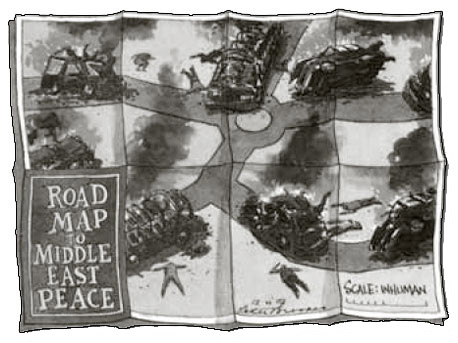5.5 ‘A sense of belonging and membership in which sentiment and emotion play an important role’
Nationalism is about land or territory and what it means to people. Nationalists make claims to the centrality of certain tracts of land to them, to their people, to their collective history, traditions, cultures and sufferings:
When a hundred thousand nationalists march down Sherbrooke Street [in Montreal] chanting ‘Le Quebec aux Quebecois’, they are not just talking about the establishment of a public language or about the protection of Quebecois culture. They are talking about a whole relation between a people and a territory and the future.
(Walker, 1999, p. 155)
Emotional attachment to land takes on various shades in debates about nationality and community. As we have seen, it is material, economic and symbolic, all at once. It is about ownership and appropriation, inclusion of one's own nation and exclusion of others. Naming is a critical part of this, a fact that is clear in the example of the Palestinian-Israeli conflict:
Some Arab villages in pre-1948 Palestine that were abandoned during the 1948 War were renamed with Hebrew equivalents leading to contestations over municipal rights; the Arab village of Ein Houd, for instance, was re-established in 1953 as the Israeli artists’ colony Ein Hod.
(Sucharov, 1999, p. 185)
Indeed, more generally, attachment to land, and imbuing of land with loaded symbolic meanings, is a core aspect of this conflict. Palestinians (and all Arabs), for example, call Jerusalem al-Qods, which translates as ‘the holy’, imbuing the city with special spiritual-political significance; a spiritual as well as a political and geographical centre of Palestine. Similarly,
To nurture their historic claim to Zion throughout the centuries, Jews have had to call up historical narratives and national symbols to strengthen the imagined link between the people and the land. Jews have historically sung folk songs about returning to Zion, and the Jewish liturgy contains references to the sanctity of Jerusalem and the land.
(Sucharov, 1999, p. 186)
Note too that borders and boundaries do not have to be understood as they normally are: fixed entities with clear meanings and consequences. Recent analyses, for example, have explored national boundaries as ‘complicated social processes and discourses rather than fixed lines’ (Paasi, 1999, p. 73). One can argue that boundaries do not persist by virtue of their being drawn on agreed maps, but primarily through daily practices which enact and reinforce them; from checkpoint controls to signs, for example. Further, our notion of what really constitutes ‘boundaries’ needs to be flexible to capture a raft of daily political realities, as the work of Huysmans (2005) with respect to asylum seeking testifies. In a similar vein, but in a very different context, consider what historian Rashid Khalidi calls ‘the quintessential Palestinian experience’, which ‘illustrates some of the most basic issues raised by Palestinian identity’ … [and which] takes place at a border, an airport, a checkpoint: in short, at any one of those many modern barriers where identities are checked and verified. What happens to Palestinians at these crossing points brings home to them how much they share in common as a people’ (Khalidi, 1997, p. 1).
In this section we have explored the different dimensions of nationalism as an ideology. We now turn to ways in which political theorists have tried to deal with the issue of principles for national self-determination and secession.
Summary
Nationalism is a particularly potent ideology, arguably different from other forms of ideology.
Freeden sets out various elements of the core structure of nationalism, which help to frame debates about and discussions of the idea and its practice.

